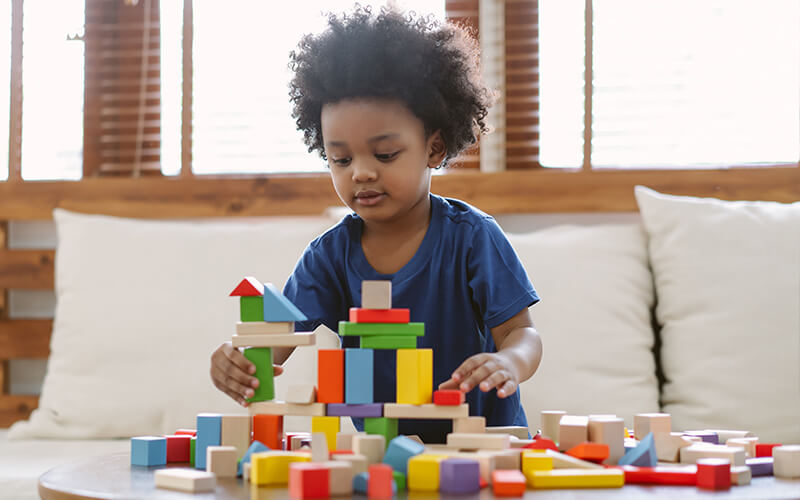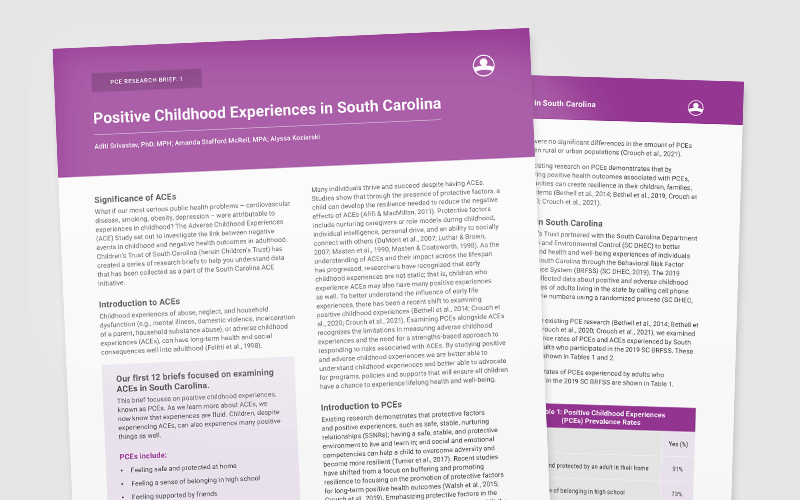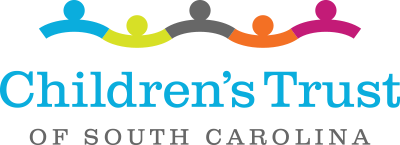How To Prevent Child Abuse and Neglect in South Carolina
Understanding Prevention
Prevention is when we go upstream and work to keep kids safe and families strong before abuse or neglect. There is a lot of proven know-how behind how and why we do our work.
Protective Factors Prevent Abuse and Neglect

- Parental resilience
- Social connections
- Concrete support in times of need
- Knowledge of parenting and child development
- Social and emotional competence of children
Understanding Adverse Childhood Experiences
Adverse childhood experiences (ACEs) are traumatic events that occur in a child’s life prior to the age of 18. This adversity can harm a child’s brain and its development, which can result in long-term negative health and social outcomes. ACEs include emotional, physical and sexual abuse; domestic violence; substance use and mental illness of someone in the household; being separated from parents, including incarceration and divorce; food insecurity; and homelessness.
Learn About the Original ACE Study ›
Fast Facts on ACEs from Centers for Disease Control and Prevention ›

Understanding Child Abuse and Neglect and How to Recognize It
Child abuse generally includes physical, sexual and psychological harm. Neglect is the failure to provide basic needs or the failure to protect a child including physical neglect, emotional neglect, medical and dental neglect, educational neglect, inadequate supervision or exposing a child to a violent environment.

Understanding Abuse and neglect

Recognizing the Signs of Abuse and Neglect

Reporting Abuse and Neglect
Building Environments so Every Child can Thrive
Building safe, stable nurturing environments for all children is at the heart of our prevention strategy, which is why we support neighborhood and community work across the state. We work to raise awareness and the commitment to helping all children thrive. We use data to inform our work. We provide parenting programs and encourage help-seeking behaviors. We also want to make sure that we have policies and programs available that will positively impact the lives of children and families in our state.

Essentials for Childhood
Young children experience their world through their relationships with parents and other caregivers. Safe, stable, nurturing relationships and environments are essential to preventing child abuse and neglect.

Positive Childhood Experiences in South Carolina
Learn how to help young people build positive experiences that build resilience and counteract ACEs.
Working at All Levels and for All Children
We focus on the well-being of all South Carolina children. Too many children suffer from a scarcity of resources and opportunity based on their skin color, zip code, family status and other factors beyond their control.
We work to ensure that all families and children have what they need to succeed and thrive. Children live within a family, that has friends and is part of a community. That community will have organizations that serve families and children. All operate under the policies, practices and laws of our society and state. We have to work at each of these levels – individual, relationship, community and societal – to reduce child abuse and neglect.
The Social Ecological Model
The social ecological model explores the interplay between individuals, community and society to better understand how factors at one level including factors at another.

